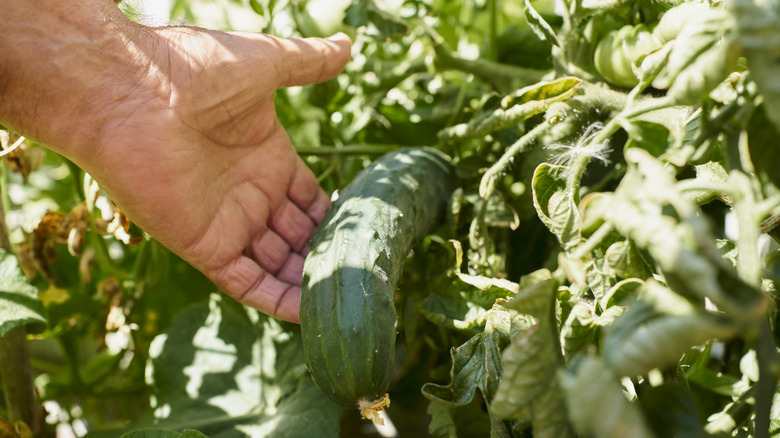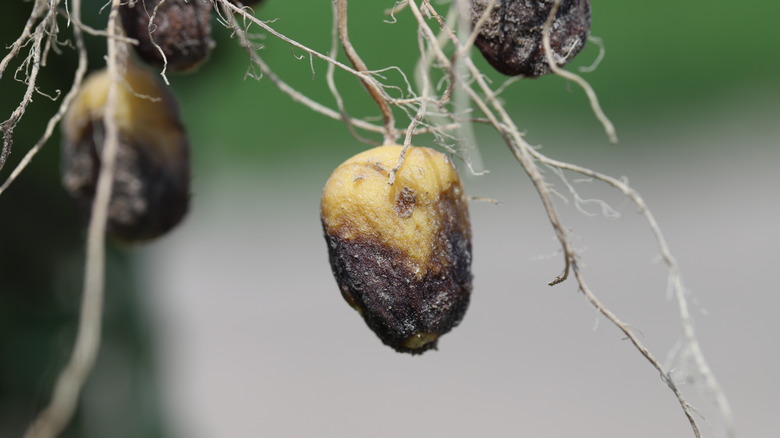The Disease Cucumbers Expose Potatoes To When Grown Together
Companion planting is a well-established practice in gardening, with certain plant combinations boosting growth, warding off pests, or enhancing soil health. If you know what companion plants are and how they impact your garden, this method is a great way to ensure your garden thrives. However, not all plants play well together. There are some plants that you should never grow together in your garden as these combinations can lead to the spread of diseases. One such pairing that poses a risk to your garden is cucumbers and potatoes. These two crops, when grown together, can lead to the spread of a destructive disease: blight.
Blight, especially in potatoes, is a serious fungal disease caused by the pathogen Phytophthora infestans. It is infamous for causing the Irish Potato Famine. To this day, it remains a significant concern for modern gardeners and farmers. While blight predominantly affects potatoes, certain conditions and plant pairings, like growing cucumbers nearby, can exacerbate the problem.
Blight is primarily a fungal disease that thrives in moist, humid environments. It attacks the leaves, stems, and tubers of potato plants, leading to devastating crop loss. The first signs of blight usually appear on plant leaves as dark, water-soaked spots that rapidly enlarge, turning black and decaying. Once the leaves are infected, the disease spreads to the stems, leading to the collapse of the plant. If it reaches the potato tubers, they can rot both in the ground and during storage. The fungus spreads through spores, which are carried by wind or water. These spores can travel significant distances, especially in damp conditions. When cucumbers are grown alongside potatoes, they can create a favorable environment for the fungus to spread. But why do cucumbers, in particular, exacerbate the problem?
The role of cucumbers in exposing potatoes to blight
While cucumbers themselves are not directly susceptible to potato blight, their growing conditions can encourage the spread of the disease. Cucumbers require regular watering and thrive in humid conditions, which can increase moisture levels around the garden. This creates an ideal environment for blight spores to develop and spread.
Moreover, cucumbers can grow as vine plants, often sprawling across the ground. This growth habit can lead to poor air circulation between the plants, trapping moisture and further encouraging fungal diseases. When blight spores land on the moist foliage of potato plants, the disease can spread rapidly. The combination of cucumbers and potatoes in the same plot can thus create a "perfect storm" for blight development.
In order to prevent and reduce the risk of blight in your garden, choose companion plants to potatoes that do not contribute to excessive moisture, such as beans, corn, or marigolds. It's also important to ensure there is adequate spacing in your garden. Don't let your grass grow too long, and leave room between consecutive plants. This will reduce humidity levels and allow air to flow freely through your garden. If you detect blight on your potato, it's important to act quickly. Remove and destroy any infected plants as soon as you can. Last, and perhaps the simplest step in preventing blight, is to avoid planting potatoes and cucumbers together.

